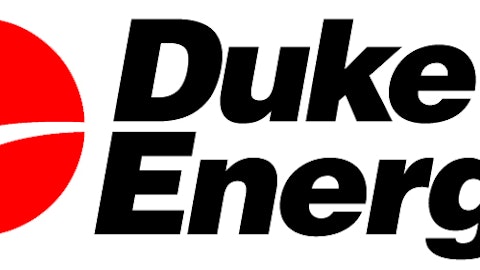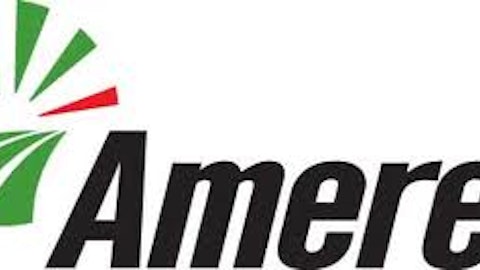When I was a kid growing up, I used to love playing Monopoly. But I never sought to own the utilities, because unlike the other properties you couldn’t build houses or hotels on them once you accumulated all of them. That means that if someone landed on one of your utilities late in the game you couldn’t bankrupt them. By contrast, if you owned Park Place and Boardwalk, and had either 4 houses or a hotel on a property that someone landed on, you could very easily bankrupt them and win the game.
Needless to say, Monopoly is just a game. Except many investors look at utilities much the same way that I looked at them when I was a kid playing monopoly: utilities offer limited returns, so I would rather purchase something else.

That type of investor should consider investing in utilities that pay a nice dividend. After all, most utilities provide investors with solid returns and peace of mind. And some even have the potential to grow at healthy rates and beat the S&P.
What Utilities Should You Consider?
American Electric Power Company, Inc. (NYSE:AEP)
With more than 5 million customers in Arkansas, Indiana, Kentucky, Louisiana, Michigan, Ohio, Oklahoma, Tennessee, Texas, Virginia and West Virginia, American Electric Power is one of the largest utilities in the United States and one of the nation’s largest generators of electricity. Furthermore, it owns the nation’s largest electricity transmission system. So if you are thinking that this company is close to a monopoly, you might not be all that far off–except that the sector is highly regulated and this company was recently ordered to restore rates for small business customers following complaints that electricity bills had risen by unreasonable amounts. On the positive side, American Electric Power Company, Inc. (NYSE:AEP) has a solid balance sheet, is well-managed, and has a track record for delivering results. On the negative side, adverse weather could impact operations and the company operates in a capital intensive industry. Overall, AEP is an attractive defensive opportunity that offers a solid annual return (dividends and moderate share price appreciation) in the 5% – 15% range with limited downside risk.
Exelon Corporation (NYSE:EXC)
Similar to American Electric Power, Exelon is one of the largest utility companies in the United States and one of the nation’s largest generators of electricity. On the one hand, Exelon’s stock price has been whacked and it is trading close to its 52-week low. On the other hand, Exelon’s shares have underperformed the market, the company recently cut is quarterly dividend to 31 cents, state regulatory commissions closely monitor Exelon Corporation (NYSE:EXC)’s return on equity, and Exelon’s nuclear-powered generation fleet is becoming less and less economical compared to alternatives. Oh, and don’t forget that many analysts are forecasting that earnings will continue to decline. All in all, I feel that there are a lot of negative expectations built into Exelon’s share price. Even so, I see moderate to limited potential for share price appreciation (unless the price of natural gas increases) and expect a solid total annual return in the 5% – 10% range.
PPL Corporation (NYSE:PPL)
PPL generates electricity from power plants throughout United States and delivers electricity to customers in Pennsylvania, Kentucky, Virginia, Tennessee and the United Kingdom. On the positive side, PPL Corporation (NYSE:PPL) recently raised its dividend, has more than doubled its sales over the past 10 years, and its transition to a more regulated business mix should stabilize earnings and catalyze dividend growth. On the negative side, even though PPL is making headlines for reaching new 52-week highs, it has underperformed the S&P over the past 12 months. On balance, this company is attractively valued given that it is trading at a P/E ratio of less than 12 and paying a dividend around 5%.
UIL Holdings Corporation (NYSE:UIL)
With a Market Cap under $2 billion, UIL is a fraction of the size of American Electric Power, PPL, and Exelon. But unlike many of the larger companies, UIL has demonstrated the ability to grow at impressive rates. On one hand, UIL has a dividend yield of around 4.5% and the potential to grow sales and earnings at healthy rates. And UIL appears to be doing the right things: increasing its cash flow, investing in infrastructure, and controlling expenses. On the other hand, capital spending is a concern, as is UIL’s lack of scale. Because of its size and potential for growth (think capital expenditures), I feel that this company is the riskiest on this list. For the same reasons, though, I also feel that this company has the most upside potential.
Westar Energy Inc (NYSE:WR)
Westar Energy is the largest electric utility in the state of Kansas. Compared to the other 5 companies on this list, Westar Energy is slightly larger than UIL and significantly smaller than all of the rest. On the positive side, Westar has a fairly healthy balance sheet, a solid dividend yield of more than 4%, and has consistently grown revenues. On the downside, Westar faces many of the same risks that other utility companies face such as exposure to unfavorable weather conditions (remember it services “tornado alley”) and regulatory issues. On balance, I think that this company is fairly valued. But I expect that its performance will improve over the next year and that it will deliver a total return around 8% – 10%.
My Foolish Take
Before investing in utilities you should consider a number of factors, such as the fact that most utilities are generally low risk, bring moderate returns, and that company performance may differ vastly from sector performance (many analysts underweight the sector but overweighting certain companies). Keep in mind, however, that some utilities have outperformed the S&P over the past year. Generally speaking, I feel that scale is a significant competitive advantage and that the larger utilities are better positioned to deliver results.
The article 5 Utilities to Consider originally appeared on Fool.com and is written by Ryan Peckyno.
Copyright © 1995 – 2013 The Motley Fool, LLC. All rights reserved. The Motley Fool has a disclosure policy.




